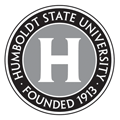Home > Journals > HJSR > No. 38 (2016)
Humboldt Journal of Social Relations
Abstract
In contrast to even a decade ago, there are more queer people in the public eye, and an increasing number people embracing a diverse range of sexual identities in the United States. To be overtly homophobic in public discourse is now risky, with public figures facing increased backlash. At the same time, even after marriage equality has been achieved, queer people in the United States still face systemic barriers to lived equality. We theorize that homophobia, while no longer as overt as it once was, has been rearticulated into covert forms of homophobia and heteronormativity, paralleling the covert racism seen in today’s social structures. While not an empirical study, we provide several examples from public discourse, including television, film, popular music, games, politics and social media to support our theory. Similar to the way Bonilla-Silva (2014) examines “racism without racists,” we contend that heterosexism is maintained through modern forms of homophobia: naturalization, cultural homophobia and the minimization of homophobia.
Recommended Citation
Teal, Janae,
and
Meredith Conover-Williams.
2017.
"Homophobia without Homophobes: Deconstructing the Public Discourses of 21st Century Queer Sexualities in the United States."
Humboldt Journal of Social Relations
1
(38):
12-27.
DOI: https://doi.org/10.55671/0160-4341.1039
Included in
American Politics Commons, Comparative Politics Commons, International Relations Commons, Lesbian, Gay, Bisexual, and Transgender Studies Commons, Models and Methods Commons, Other Feminist, Gender, and Sexuality Studies Commons, Other Political Science Commons, Political Theory Commons, Politics and Social Change Commons, Women's Studies Commons


